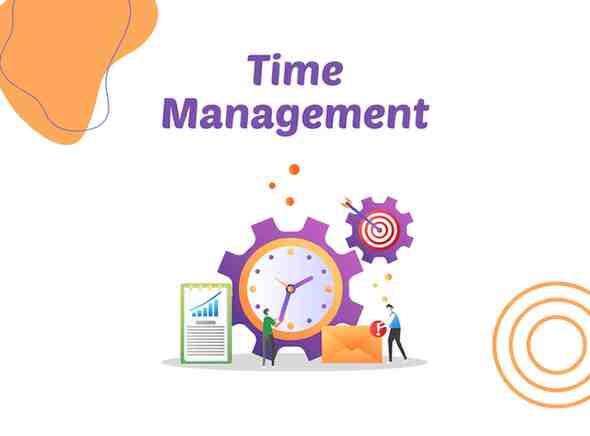

In the bustling business landscape of Bangladesh, where every second counts, efficient time and attendance management is crucial for organizational success. Manual methods of tracking employee hours are prone to errors, time-consuming, and often result in administrative burdens for HR professionals. However, with the advent of Time and Attendance Management Systems, businesses can unlock a myriad of benefits that streamline processes, enhance accuracy, and drive productivity. Let’s delve into the significant advantages of implementing Time and Attendance Management Systems in Bangladesh and how they revolutionize workforce management practices.
1. Accuracy and Precision:
Time and Attendance Management Systems eliminate the inaccuracies associated with manual timekeeping methods. By leveraging automated time-tracking technologies such as biometric scanners, RFID tags, or mobile apps, these systems capture employee clock-in and clock-out times with precision. This accuracy ensures that payroll calculations are error-free, compliance with labor regulations is maintained, and discrepancies in attendance records are minimized.
2. Streamlined Processes:
Gone are the days of tedious paperwork and manual data entry. Time and Attendance Management Systems streamline administrative processes by automating time-tracking, leave management, and attendance reporting. HR professionals can easily generate reports, monitor employee attendance patterns, and manage leave requests within a centralized platform, saving time and reducing administrative overheads.
3. Compliance with Labor Regulations:
Compliance with labor laws and regulations is essential for businesses operating in Bangladesh. Time and Attendance Management Systems help organizations adhere to legal requirements by enforcing attendance policies, tracking overtime hours, and generating compliance reports. This ensures that employees are compensated fairly, labor standards are upheld, and potential legal risks associated with non-compliance are mitigated.
4. Improved Productivity:
Efficient time and attendance management contribute to improved productivity across the organization. By accurately tracking employee hours worked, identifying bottlenecks in workflow processes, and optimizing resource allocation, Time and Attendance Management Systems enable businesses to maximize workforce productivity. This leads to better resource utilization, reduced downtime, and ultimately, increased profitability.
5. Real-Time Visibility:
Time and Attendance Management Systems provide real-time visibility into employee attendance data, allowing managers and HR professionals to monitor workforce activity instantly. Through customizable dashboards, alerts, and notifications, stakeholders can track employee attendance patterns, identify trends, and address issues promptly. This proactive approach enhances decision-making, fosters accountability, and ensures business continuity.
6. Enhanced Employee Accountability:
Transparent and accountable workforce management practices are essential for fostering a culture of responsibility and trust within the organization. Time and Attendance Management Systems promote employee accountability by providing visibility into attendance records, enforcing attendance policies consistently, and addressing attendance-related issues promptly. This fosters a sense of ownership among employees, leading to higher levels of engagement and performance.
7. Integration with Payroll Systems:
Seamless integration with payroll systems is a key feature of Time and Attendance Management Systems. By synchronizing time-tracking data with payroll processing software, these systems automate payroll calculations, deductions, and reimbursements based on accurate attendance records. This integration minimizes errors, ensures payroll accuracy, and streamlines the payroll administration process for HR professionals.
8. Flexibility for Remote Work:
In today’s increasingly remote work environment, Time and Attendance Management Systems offer flexibility and adaptability to accommodate diverse work arrangements. Whether employees are working from home, on flexible schedules, or in different locations, these systems provide remote access to time-tracking functionalities through mobile apps or web-based interfaces. This ensures that attendance is accurately recorded, regardless of where employees are located.
Choosing the Right TAM for Your Business:
The ideal TAM for your company depends on your specific needs and workforce size. Here are some factors to consider:
- Features: Identify functionalities crucial for your business, such as mobile app integration, overtime tracking, or project-based time tracking.
- Scalability: Choose a TAM that can adapt and grow alongside your company.
- Budget: Consider the cost of the software and implementation in relation to the value it offers.
- Ease of Use: A user-friendly interface ensures smooth adoption by both employees and HR professionals.
- Security: Data security is paramount. Choose a TAM with robust security features.
Investing in Efficiency and Success:
Implementing a Time and Attendance Management System is an investment in the efficiency and success of your business. By improving accuracy, streamlining processes, and fostering a data-driven approach, TAMs empower you to make informed decisions, optimize your workforce, and achieve your business goals.
Ready to clock in for success? Explore the options available and unlock the power of TAMs in your organization!
Request a free demo! Explore GS hrm software today!